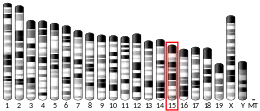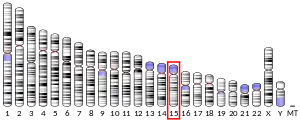| OC90 | |||||||||||||||||||||||||||||||||||||||||||||||||||
|---|---|---|---|---|---|---|---|---|---|---|---|---|---|---|---|---|---|---|---|---|---|---|---|---|---|---|---|---|---|---|---|---|---|---|---|---|---|---|---|---|---|---|---|---|---|---|---|---|---|---|---|
| Identifiers | |||||||||||||||||||||||||||||||||||||||||||||||||||
| Aliases | OC90, PLA2L, otoconin 90 | ||||||||||||||||||||||||||||||||||||||||||||||||||
| External IDs | OMIM: 601658 MGI: 1313269 HomoloGene: 19021 GeneCards: OC90 | ||||||||||||||||||||||||||||||||||||||||||||||||||
| |||||||||||||||||||||||||||||||||||||||||||||||||||
| |||||||||||||||||||||||||||||||||||||||||||||||||||
| |||||||||||||||||||||||||||||||||||||||||||||||||||
| |||||||||||||||||||||||||||||||||||||||||||||||||||
| |||||||||||||||||||||||||||||||||||||||||||||||||||
| Wikidata | |||||||||||||||||||||||||||||||||||||||||||||||||||
| |||||||||||||||||||||||||||||||||||||||||||||||||||
| Oc90 | |||||||||||||||||||||||||||||||||||||||||||||||||||
|---|---|---|---|---|---|---|---|---|---|---|---|---|---|---|---|---|---|---|---|---|---|---|---|---|---|---|---|---|---|---|---|---|---|---|---|---|---|---|---|---|---|---|---|---|---|---|---|---|---|---|---|
| Identifiers | |||||||||||||||||||||||||||||||||||||||||||||||||||
| Aliases | Ocn-95PLA2LPla2lloc95otoconin 90 | ||||||||||||||||||||||||||||||||||||||||||||||||||
| External IDs | HomoloGene: 19021 GeneCards: | ||||||||||||||||||||||||||||||||||||||||||||||||||
| |||||||||||||||||||||||||||||||||||||||||||||||||||
| |||||||||||||||||||||||||||||||||||||||||||||||||||
| |||||||||||||||||||||||||||||||||||||||||||||||||||
| |||||||||||||||||||||||||||||||||||||||||||||||||||
| Wikidata | |||||||||||||||||||||||||||||||||||||||||||||||||||
| |||||||||||||||||||||||||||||||||||||||||||||||||||
Otoconin is a structural glycoprotein found in the otoconial membrane of vertebrates. It is the major protein component of the otoconia (ear dust).[6]
In mice the protein is called otoconin-90, and is coded by the Ocn-95 gene. In humans the ortholog is called PLA2L, originally believed to be a pseudogene.[6]
In mice the protein contains 469 amino acids, and is coded by 1906 base-pair DNA. In mice the protein is first formed at day 9.5 in the otic vesicle dorsal wall epithelium, and also in the endolymphatic duct. This is before any minerals are deposited. Four days later it also appears in the non-sensory epithelium of the utricle and saccule and semicircular canals. The roof of the cochlear duct also has some. By ten days after birth the protein is not found in any cells, but only in the acellular membranes.[6]
The otoconin-90 contains two secretory phospholipase A2 (sPLA2) domains. sPLA2 has a rigid structure with eight disulfide bonds. The sPLA2 domain has the ability to bind a phospholipid, but does not have enzymatic capability. Presumably the domain also binds calcium Ca2+ ions and carbonate CO32+. Otoconin-90 would position the ions to fit into a calcite lattice. The calcium is hypothesized to be secreted from the sensory epithelium into the gelatinous substance on the top of which it meets otoconin and forms otoconia.[7]
In amphibians (Xenopus) a similar mass protein is contained in the utricle along with calcite. The saccule contains aragonite with otoconin-22 which is 22 kDa in mass. Otoconin-22 contains 127 amino acids.[6] Otoconin-22 has a single sPLA2 domain.
Chondrostean fish contain a similar protein of 40 to 50 kDa mass, and vaterite as the mineral component.[6]
In mammals otoconin makes up 90% of the protein component of an otoconium grain, primarily in the core.[7]
References
- 1 2 3 GRCh38: Ensembl release 89: ENSG00000253117 - Ensembl, May 2017
- 1 2 3 GRCm38: Ensembl release 89: ENSMUSG00000015001 - Ensembl, May 2017
- ↑ "Human PubMed Reference:". National Center for Biotechnology Information, U.S. National Library of Medicine.
- ↑ "Mouse PubMed Reference:". National Center for Biotechnology Information, U.S. National Library of Medicine.
- ↑ "Human PubMed Reference:". National Center for Biotechnology Information, U.S. National Library of Medicine.
- 1 2 3 4 5 Verpy, E.; Leibovici, M.; Petit, C. (19 January 1999). "Characterization of otoconin-95, the major protein of murine otoconia, provides insights into the formation of these inner ear biominerals". Proceedings of the National Academy of Sciences. 96 (2): 529–534. Bibcode:1999PNAS...96..529V. doi:10.1073/pnas.96.2.529. PMC 15170. PMID 9892667.
- 1 2 Thalmann, Ruediger; Ignatova, Elena; Kachar, Bechara; Ornitz, David M.; Thalmann, ISOLDE (25 January 2006). "Development and Maintenance of Otoconia". Annals of the New York Academy of Sciences. 942 (1): 162–178. doi:10.1111/j.1749-6632.2001.tb03743.x. PMID 11710459. S2CID 85626725.





